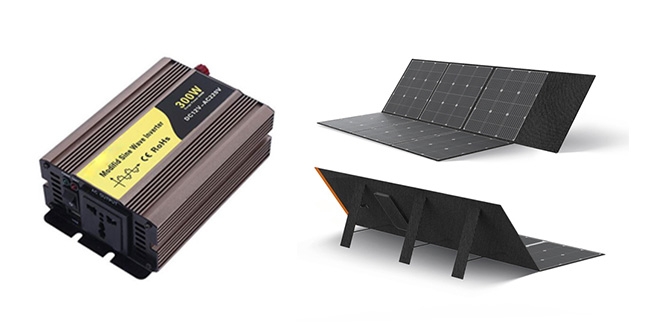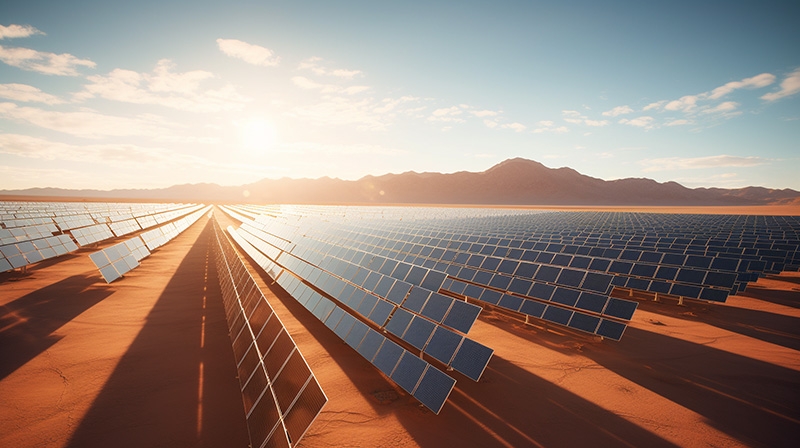With the increasing global emphasis on renewable energy, photovoltaic (PV) power generation, as one of the leaders, has been widely used. And the PV inverter, as a crucial component in the PV power generation system, plays a central role. Its main function is to efficiently convert the DC power generated by PV modules into AC power that meets grid standards, thus ensuring the safe and stable delivery of power. But the role of the inverter goes far beyond that. It also shoulders the important task of protecting the safe and stable operation of the PV array and the power grid. It also undertakes important system-level functions such as protection of the external environment and human-computer interaction. Therefore, the stability and service life of the PV inverter is directly related to the performance and profitability of the entire PV power generation system. So, how to effectively extend the life of a PV inverter? Today Inverter.com will conduct an in-depth discussion from multiple aspects.
Photovoltaic inverters and power inverters are both power conversion devices used to convert direct current (DC) to alternating current (AC). Photovoltaic inverters are specifically designed for solar photovoltaic power generation systems, converting the electricity generated by solar arrays into AC power suitable for use by the grid or local loads. They also have unique features such as Maximum PowerPoint Tracking (MPPT). Power inverters, on the other hand, are more broadly used in various scenarios such as in vehicles and outdoor operations, converting DC power sources into AC power and incorporating various safety protection functions. Despite differences in application scenarios and functions, both types of inverters achieve the conversion from DC to AC, providing crucial support for the stable operation of power systems.

Why do inverters need heat dissipation?
As a power electronic device, the PV inverter, like all electronic products, faces challenges caused by temperature. Among the many cases of electronic product failure, up to 55% are caused by temperature problems. The electronic components inside the inverter are very sensitive to temperature. According to the "10-degree rule" of reliability theory, every time the temperature rises by 10 degrees, its service life will be halved. Therefore, the heat dissipation design of the inverter is particularly important.
What are the ways to dissipate inverter heat?
The inverter cooling system is mainly composed of heat sinks, cooling fans, thermally conductive silicone grease, and other materials. There are two main ways of inverter heat dissipation at present: natural cooling and forced air cooling.
- Natural cooling
Natural cooling refers to the realization of localized heat-generating devices to dissipate heat to the surrounding environment for the purpose of temperature control without relying on any external auxiliary energy. This usually covers the three basic heat transfer modes of conduction, convection, and radiation, among which convection is dominated by natural convection.
Natural heat dissipation or cooling is usually applicable to low-power devices and components that do not require high-temperature control, relatively low heat flow density of device heating, and sealed or densely assembled devices should not (or do not need to) use other cooling technologies.
Currently, on the market, most manufacturers of mainstream single-phase inverters and three-phase inverters below 20kW use natural cooling to dissipate heat.
- Forced air cooling
Forced air cooling is a heat dissipation technology that utilizes fans and other devices to forcefully drive airflow, thereby effectively taking away the heat generated by equipment or devices. This method is not only easy to operate but also has a significant heat dissipation effect. If the space between components within a part is suitable for airflow or suitable for the installation of a local heat sink, this cooling method can be used as much as possible.
The method to improve the forced convection heat transfer capacity is to increase the heat dissipation area and generate a relatively large forced convection heat transfer coefficient on the heat dissipation surface. Increasing the heat dissipation area on the surface of the radiator to enhance the heat dissipation of electronic components has been widely used in practical engineering.
In the project, fins are mainly used to expand the heat dissipation area of the heat sink surface to achieve the purpose of enhancing heat transfer. The choice of material for the heat sink itself is directly related to its heat dissipation performance. At present, copper and aluminum are commonly used radiator materials, and their extended heat exchange surfaces are usually made by processes such as folding fins or stamping thin fins.
- Comparison of the two cooling methods
Natural cooling and forced air cooling each have their own advantages and disadvantages. Natural cooling does not have a fan, resulting in low noise, but the cooling rate is slow, making it generally suitable for low-power inverters. Forced air cooling, on the other hand, requires a fan, which increases noise but offers significant cooling effectiveness, making it suitable for high-power inverters. Both cooling methods are applied in medium-power string inverters.
Through comparative experiments on the cooling capacity of string inverters, it was found that for string inverters above the 50kW power level, forced air cooling is more effective than natural cooling. The temperature rise of critical components such as capacitors and IGBTs inside the inverter was reduced by approximately 20°C, thereby extending the inverter's lifespan and improving operational efficiency. In contrast, inverters using natural cooling experienced higher temperature rises, resulting in shorter component lifespans.
Forced air cooling also offers two fan speed options: high-speed and medium-speed. High-speed fans can reduce the size and weight of the heat sink but increase noise and have a shorter lifespan. Medium-speed fans result in slightly larger heat sinks, but the fans do not run at low power levels and operate at low speed at medium power levels. Since inverters do not frequently run at full power, the overall lifespan of the fans is extended.
Why is heat dissipation crucial in system installation?
The power inverter itself is a heat source, and all the heat needs to be dissipated promptly. It cannot be placed in an enclosed space; otherwise, the temperature will continue to rise, affecting its normal operation. Therefore, the inverter should be placed in a well-ventilated space, and direct sunlight should be avoided as much as possible. Additionally, when installing multiple inverters, sufficient distance should be maintained to prevent mutual interference.
- Selection of Installation Environment: Choosing a well-ventilated, dry, and low-dust installation location while avoiding direct sunlight and rain erosion can effectively extend the service life of the inverter.
- Correct Electrical Connections: Ensure correct cable selection and wiring, and secure connections to avoid overheating and fire caused by poor contact. Good grounding protection and lightning protection measures can prevent damage to equipment from lightning strikes and electrical faults.
- Commissioning and Parameter Setting: Before the first use of the inverter, detailed commissioning and parameter settings are required, including MPPT (Maximum Power Point Tracking) settings, grid parameter settings, and protection parameter settings to ensure efficient and safe operation.
How to perform regular maintenance and upkeep?
- Regular inspection and cleaning: Regular inspection and cleaning of the inverter, including visual inspection, cable connection inspection, and dust removal, can significantly extend its service life.
- Software upgrade and fault diagnosis: Keep the inverter firmware up to date. Monitor the operational status in real-time through a monitoring system, promptly identify and address faults to prevent small issues from developing into major failures.
- Environmental optimization and protection: Take corresponding protective measures according to environmental changes, such as installing sunshades and heat dissipation equipment in high-temperature environments, installing lightning arresters and surge protectors in lightning-prone areas, and preventing insects and small animals from entering the inverter in the wild or rural areas.

Through proper selection, scientific installation and commissioning, regular maintenance, and timely fault handling, the service life of PV inverters can be significantly extended, ensuring the long-term stable operation of PV systems. Especially in the context of the global energy transition and the rapid development of renewable energy, extending the service life of PV inverters can not only reduce costs but also enhance energy utilization efficiency, contributing to sustainable development. Inverter.com hopes that the methods and suggestions provided in this article will offer valuable reference and assistance to photovoltaic system maintenance personnel and users.
